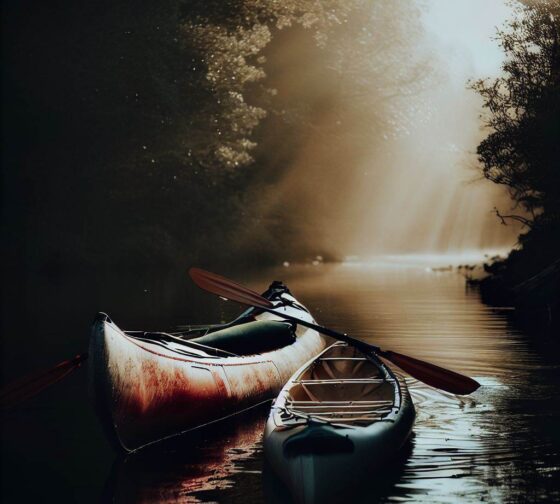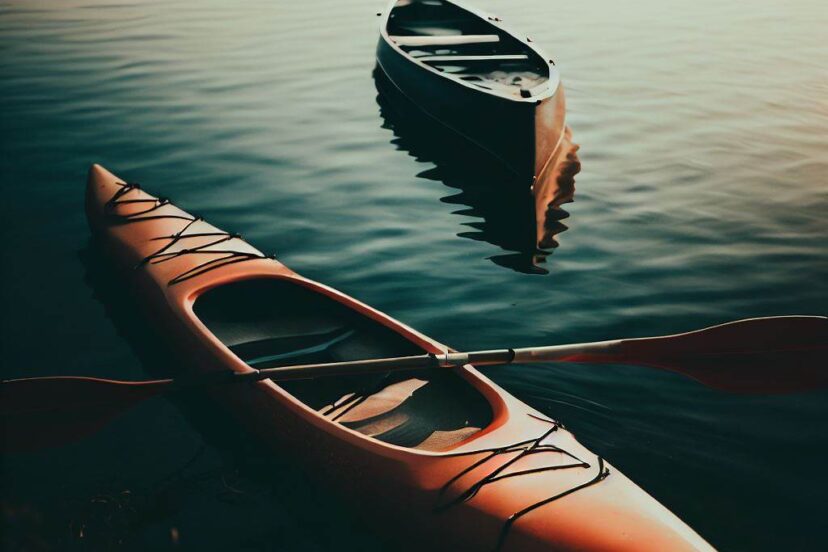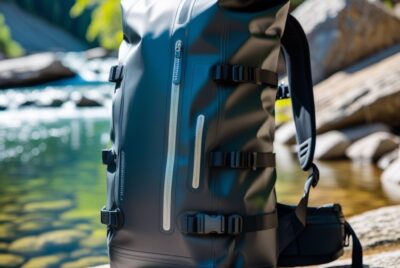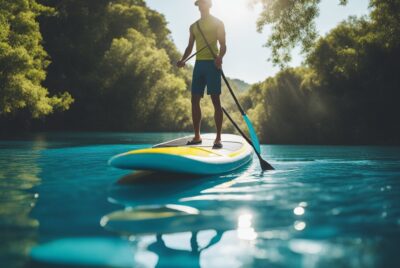Canoe vs Kayak: Navigating the Differences
*We may earn a commission for purchases made using our links. Please see our disclosure to learn more.
Canoe vs Kayak: Navigating the Differences
Let’s settle the debate Canoe vs Kayak? Every time I set foot in a canoe or a kayak, it’s like stepping into a different world – a world where the hustle of everyday life fades into the background, and the rhythm of the paddle becomes my primary focus. These moments on the water have taught me not only about the sports themselves but also about patience, strength, and the beauty of nature.
Canoe vs Kayak: Historical Context
Delving into the origins, canoes and kayaks have distinct cultural legacies. Canoes, with their origins among North American indigenous peoples, were crafted from tree trunks and bark, signifying a deep connection with nature. Kayaks, born in the icy waters of the Arctic, were Inuit inventions, skillfully designed for hunting and survival in harsh conditions. Observing their evolution into modern sports equipment is like watching history come alive, reflecting human ingenuity and adaptability.
Canoe: Characteristics and Benefits
The canoe’s design is a marvel of simplicity and efficiency. Its wide hull offers stability and ample space, making it ideal for a leisurely paddle with friends or a solo expedition with camping gear. I’ve found canoeing to be a meditative experience, where the gentle rocking of the boat and the panoramic views create a sense of profound tranquility.
Kayak: Characteristics and Benefits
In contrast, kayaks are the sports cars of the water world. Sleek, fast, and close to the water, they offer an exhilarating experience. As a kayaker, you feel every wave and ripple, and the connection between you, the kayak, and the water is intimate and immediate. It’s a sport that demands skill and offers immense satisfaction in return.
Comparing Canoe and Kayak
Stability and Maneuverability
Stability and maneuverability are crucial in choosing between a canoe and a kayak. Canoes, with their wider base, offer a sense of security, especially for beginners or when taking children on board. Kayaks, although initially more challenging, provide an unmatched agility that makes navigating through tight spots or riding waves an absolute thrill.
Suitability for Different Water Conditions
Canoes shine on calm lakes and slow-moving rivers where the serenity of the water complements their leisurely pace. Kayaks, however, are built for diversity – they handle everything from tranquil lakes to roaring ocean waves and challenging white-water rapids. This versatility is what draws many to choose kayaking for varied water adventures.
Canoe vs Kayak: Maneuverability and Control
- Paddling Techniques: A canoe paddle typically has one blade, requiring rhythmic strokes. Kayak paddles have blades on both ends, allowing for quicker, alternate strokes.
- Stability and Balance: While canoes offer greater initial stability, kayaks shine in terms of secondary stability during sharp turns or rough waters.
The Evolution of Paddling Sports

The world of paddling has come a long way from those initial days when indigenous tribes recognized the potential of traveling across waters using simple watercraft. Canoeing and kayaking are no longer just modes of transportation; they’ve transformed into cherished recreational activities, team sports, and even Olympic disciplines. These two have evolved, incorporating modern materials like fiberglass, carbon fiber, and durable plastics, making them both lighter and more resilient. Innovations have also led to hybrid designs, like the canoe-kayak crossover, which offers the best of both worlds.
As technology advances, it’s awe-inspiring to witness the innovations being introduced in the paddling world, making the experience even more rewarding and accessible for enthusiasts of all levels.
Personal Touch to Paddling Choices
When I think about choosing between a canoe or a kayak, it often reminds me of the age-old debate of tea vs. coffee. Both have their fervent advocates, and both have unique flavors and experiences to offer. For some, the rhythmic, almost meditative stroke of the canoe paddle, coupled with the boat’s roominess and the panoramic view it offers, becomes an addictive leisure pursuit. For others, the close-to-water feel of a kayak, the thrill of cutting through waves, and the agility it offers make it an unparalleled choice. At the end of the day, it’s all about personal preference.
Do you lean into the calm embrace of the lake in a canoe or chase the thrilling dance of rapids in a kayak? Whatever you pick, nature’s aquatic wonderland is ready to greet you.
Canoe vs Kayak: Storage and Portability
While kayaks are often lighter and easier to transport, canoes offer more storage space, ideal for longer trips.
Suitability for Different Water Conditions
Canoes shine on calm lakes and slow-moving rivers where the serenity of the water complements their leisurely pace. Kayaks, however, are built for diversity – they handle everything from tranquil lakes to roaring ocean waves and challenging white-water rapids. This versatility is what draws many to choose kayaking for varied water adventures.
Suitability for Beginners
Starting with canoeing can be more straightforward, focusing on basic paddling techniques and balance. Kayaking, however, often requires more structured training, especially if you’re looking to tackle challenging conditions. I’ve found that investing time in learning advanced paddling techniques and safety skills enhances the kayaking experience exponentially.
Safety Considerations
Always wear a life vest! While canoes feel stable, they can tip. Kayaks, especially the sit-ins, require knowledge on how to roll or exit underwater.
Cost Analysis
While basic canoes and kayaks fall in a similar price range, specialized kayaks, designed for specific adventures, might cost more.
Conclusion
In the end, whether you choose a canoe or a kayak, you’re choosing a path to adventure, fitness, and a deeper connection with nature. Each has its own charm and challenges, and the best choice depends on what you seek from your time on the water. For me, both canoeing and kayaking have been sources of joy, learning, and unforgettable memories.
Whether you lean towards a canoe or kayak, the water awaits! Base your choice on your adventure type, water body, and comfort level. Dive in and paddle on!
Canoe vs Kayak: FAQs
- Is canoeing harder than kayaking?
- It depends on the individual and the water body. Generally, canoeing is considered more relaxed, while kayaking can be more intense, especially in rough waters.
- Can I fish from a kayak?
- Absolutely! Many kayaks are designed specifically for fishing, offering stability and storage for gear.
- Which is faster: a canoe or kayak?
- Typically, kayaks are faster due to their streamlined design, but a skilled canoeist can achieve impressive speeds.
- How do I choose between a canoe and kayak for family outings?
- Consider space and comfort. Canoes often provide more space, making them suitable for family trips.
- Are kayaks safe for children?
- Yes, with proper supervision and safety gear. Always ensure kids wear life vests and are familiar with safety protocols.




